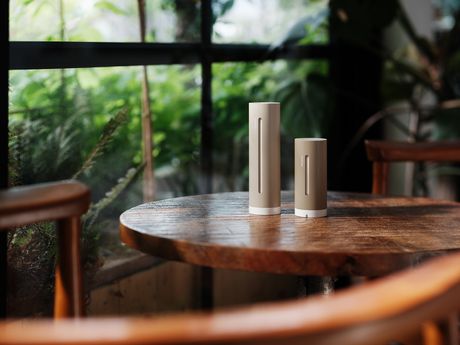
Netatmo unveils the new Weather Station ORIGINAL

Up to 50% off selected productsBuy

The carbon monoxide detector is a device that emits an alarm when it detects the gas in too large a quantity in a certain room of your home.
Essentially, the carbon monoxide detector is a security system that continuously analyses the ambient air in a room. This helps guard against the dangers of carbon monoxide, a gas that is poisonous and even fatal with prolonged exposure.
Any combustion appliance can emit this gas into the home, whether it is a gas stove, an oil fire or a thermal heater. Since carbon monoxide detectors contain a sensor, they should be placed near where carbon monoxide would be released (in other words, near your heating appliances).
Carbon monoxide detectors aren’t only for residential homes such as houses or apartments. They can also be installed in a caravan or mobile home (in this case, they are sometimes even more efficient).
Contrary to popular belief, and often because of the confusion between smoke detectors and carbon monoxide detectors, the latter should not be placed on the ceiling, but preferably on the wall.
It can be very dangerous to install a carbon monoxide detector on the ceiling. To fully understand why, first we need to cover a few key principles.
There is a good reason that we install our smoke detectors on the ceiling: smoke is lighter than air, so it rises quickly. On the other hand, installing carbon monoxide detectors on the ceiling can be very dangerous for one simple reason: carbon monoxide has the same density as air.
This means that carbon monoxide does not naturally rise up to the ceiling, like smoke. Instead, carbon monoxide mixes with the ambient air in the room. This means that the gas becomes most concentrated in the area where the air is circulated: the centre of the room.
So, where should you install your carbon monoxide detector for it to be really effective?
For it to be most effective, it is important to install your carbon monoxide detector in the same room as your fuel appliance. This means the detector’s alarm will ring at the slightest overshoot of the safe carbon monoxide threshold.
Ideally, you should install your detector 1 to 3 metres from the source appliance, in a horizontal position. The detector must be installed at around eye level, so between 1.5 and 1.7 metres.
However, this is not always possible, depending on the layout of your home. If you run out of space to install your carbon monoxide detector according to these tips (i.e. more than a metre or so from the source and at eye level), another option is possible. You can actually install the detector at a little over a metre from the appliance. However, this is less efficient.
Important to note: you should never place the detector too close to the potential source of carbon monoxide, as this can affect its proper function.
Especially in a very large or very well soundproofed home, you must also be able to hear the detector's alarm under all circumstances, wherever you are when it rings.
If the room where you place the detector is too far from the room where you sleep, for example, you may not be alerted in due time. This will affect the usefulness of your carbon monoxide detector.
This is to make sure the detector is continuously measuring a sample of the air you breathe at home! To ensure this, try to avoid installing the detector near a ventilation source (window, door, extractor hood, and so on).
Carbon monoxide is undetectable without a specific detector device, as it is odourless, colourless, and does not irritate the eyes or throat. Its dangers, however, are very real: inhaling the gas can have serious consequences that can lead to death.
In the UK, carbon monoxide alarms must currently be installed in all residential buildings with fixed solid-fuel burning appliances.
For your safety, it is wise to install a carbon monoxide detector to avoid potential poisoning. Statistics from the UK’s National Health Service show that there are around 60 deaths from accidental carbon monoxide poisoning in England and Wales each year.
No matter what type of heating you use (wood, gas or oil), the risk of incomplete combustion (the process that causes carbon monoxide to be emitted) is real.
However, there are some basic rules that make it possible to limit the cases of carbon monoxide emissions. These include:
Maintaining your heating and piping
Managing your fuel properly
Keeping your heating appliances in the best possible condition
As the (battery) life of carbon monoxide detectors is not unlimited, it is also important to test your carbon monoxide detector once a year to see if its alarm is still working.
It’s undoubtedly the right move to install a carbon monoxide detector, so that this gas is no longer a potential threat in your home. Home security is not optional, and a carbon monoxide detector keeps you safe from one of the most dangerous gases in the house.
All you have to do is choose the carbon monoxide detector that suits you best: entry-level or high-end, connected or classic, wired or wireless, battery-powered or no-battery, etc. Then, all you have to do is install the detector at home. The good news is that carbon monoxide detectors require no maintenance, aside from regular alarm functionality checks!

Security
Motor Homes: should you install a carbon monoxide detector?

Carbon Monoxide Alarm
What’s the difference between a smoke detector and a carbon monoxide detector?

Carbon Monoxide Alarm
How do you detect carbon monoxide indoors?

Carbon Monoxide Alarm
What are the symptoms of carbon monoxide poisoning?